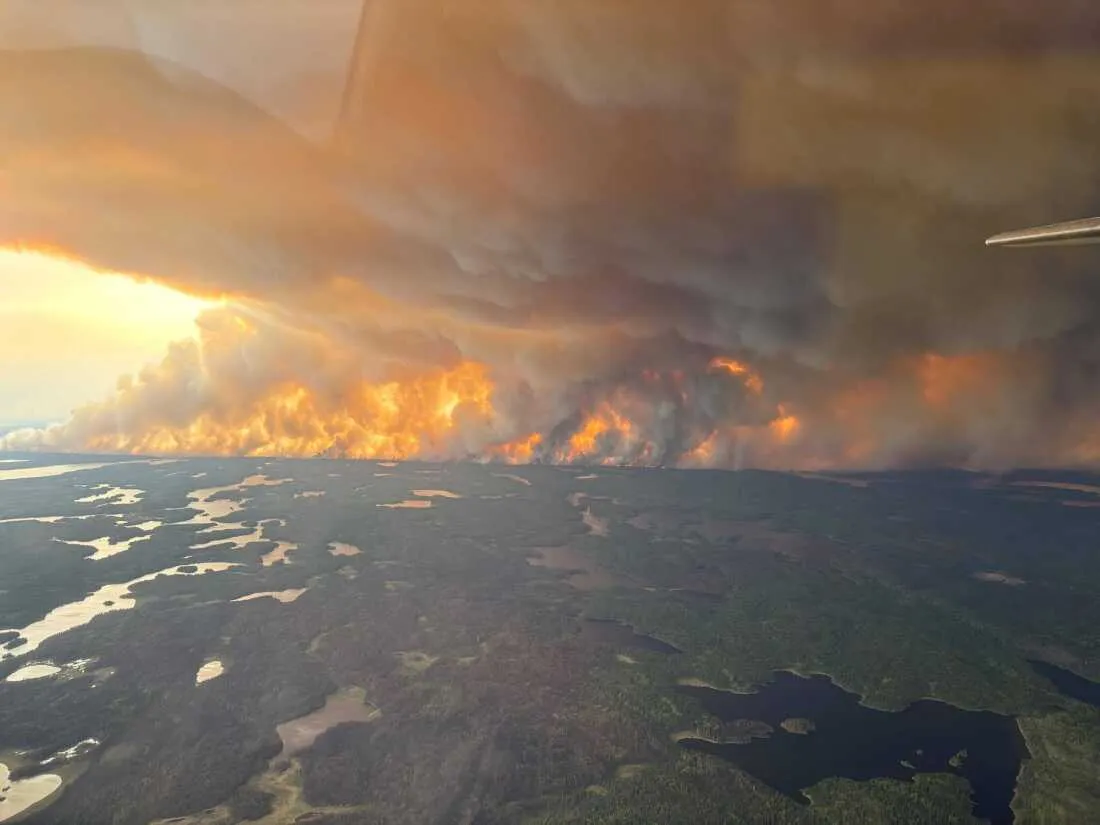Understanding the Canadian Wildfires and Their Reach
This summer, a devastating spate of wildfires in Canada has sent thick, billowing smoke wafting across the border into the United States. As millions of Americans are dealing with the aftermath, the environmental and public health implications are becoming increasingly clear.
What Causes the Wildfires?
Wildfires are often attributed to a combination of dry conditions, high temperatures, and lightning strikes. In Canada, the summer months have seen rising temperatures, exacerbated by climate change, which has led to significant dry spells. These conditions create a perfect storm for wildfires to ignite and spread.
Current Situation
Across Canada, particularly in provinces like British Columbia, Alberta, and Quebec, wildfires have been rampant. Hundreds of fires are ongoing, forcing evacuations, causing significant ecological harm, and releasing copious amounts of smoke into the atmosphere. Weather patterns have facilitated the movement of this smoke southward into the United States, affecting air quality far beyond the border.
Air Quality Alerts Across the U.S.
This weekend, states like Minnesota and New York are on high alert due to the American Meteorological Society’s (AMS) warning regarding the influx of wildfire smoke. As the smoke drifts southward, officials have issued air quality alerts, advising residents to limit outdoor activities, particularly those who suffer from respiratory issues, elderly individuals, and children.
Minnesota Alert
The Minnesota Pollution Control Agency announced air quality alerts for several regions, stating that particulate matter (PM2.5) levels are expected to rise to unhealthy levels. The haze and reduced visibility can be seen and felt throughout the state. Authorities urge residents to stay indoors and avoid strenuous activities.
New York’s Outlook
As the smoke reaches New York, meteorologists are tracking the expected movement of the smoke plume. In areas like Upstate New York, where air quality can vary drastically, residents are advised to stay informed through local news outlets and the Air Quality Index (AQI).
Health Risks Associated with Wildfire Smoke
The inhalation of smoke presents immediate health risks, particularly due to fine particulate matter that can penetrate deep into the lungs. Those affected may experience coughing, throat irritation, and breathing difficulties. Long-term exposure can contribute to severe respiratory diseases and exacerbate existing conditions.
Vulnerable Populations
Children, the elderly, and individuals with pre-existing conditions such as asthma or heart disease are at higher risk and should take proactive measures to reduce exposure. Masks can help filter out particles, but staying indoors with air purifiers is the most effective method for enhancing air quality.
Community Response
Local governments across affected states are mobilizing to provide resources for residents. Temporary air shelters are being established where individuals can find refuge from the outside smoke. Moreover, public health campaigns are underway to educate communities about the risks and encourage protective measures.
Long-Term Implications of Wildfires
The wildfires of 2023 serve as a stark reminder of the growing impact of climate change. Experts forecast that if current trends continue, wildfires will become more frequent and intense. This not only disrupts the current environment but also has ramifications on air quality and health standards across North America.
What Can Be Done?
Addressing the root cause of climate change is the long-term solution to mitigating wildfire risks. Infrastructure investments in renewable energy, conservation efforts, and community awareness will play a crucial role in combating climate threats. Individual actions, such as reducing fossil fuel consumption and supporting eco-friendly policies, contribute collectively to a movement aimed at safeguarding our future.
Community and Personal Action Plans
As community organizers mobilize, individuals are reminded to take ownership of their safety and health. The American Lung Association recommends keeping windows and doors closed, using high-efficiency particulate air (HEPA) filters in homes, and creating an emergency plan that includes health resources. Participating in local initiatives focused on environmental sustainability can also encourage broader change.
Conclusion
The blowback of Canadian wildfires reverberates through the U.S., raising awareness among individuals about air quality and climate change. A proactive approach can mitigate health risks, protect natural resources, and work toward lasting solutions that benefit all communities. In the meantime, staying informed and prepared is crucial for navigating the challenges posed by these environmental threats.







